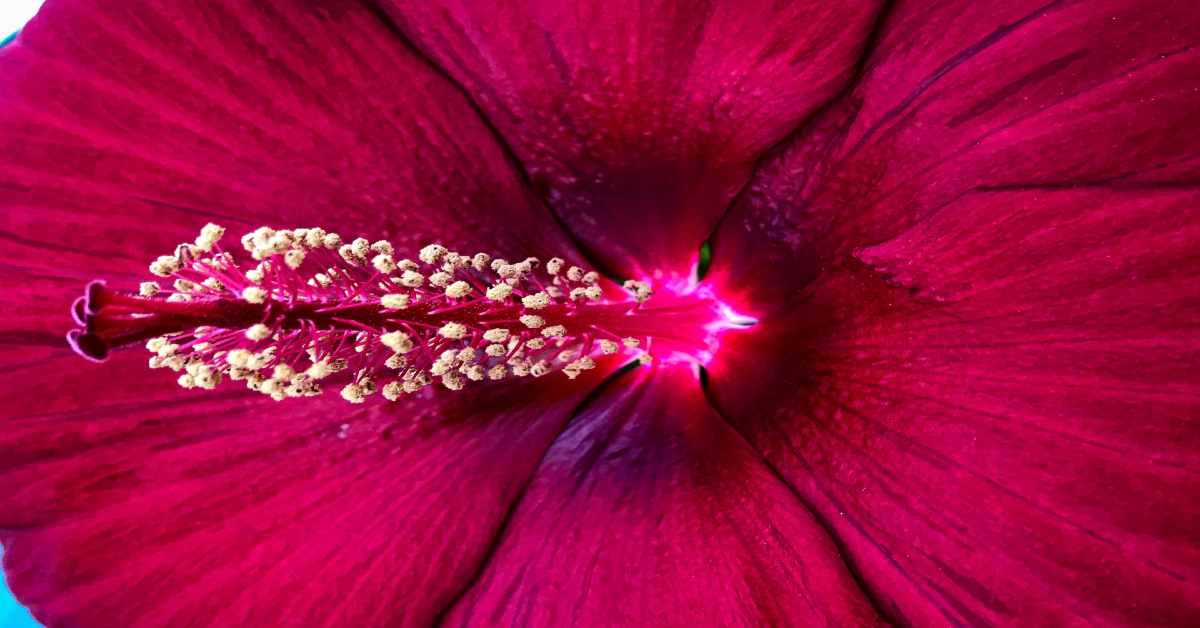What is Hibiscus?
Hibiscus rosa sinensis L. (Malvaceae) is a Chinese native plant. Many Hibiscus species are grown for their showy flowers. It is a shrub that is widely cultivated as an ornamental plant in the tropics and comes in a variety of forms with different flower colors. Hibiscus has medicinal qualities and is a common ingredient in many herbal teas. Also, In medicine, the red-flowered variety is popular. Several studies have found that distinct Hibiscus plants have varying medicinal properties. Hibiscus Benefits include; decoction, infusion, or maceration for their hepatoprotective, antiparasitic, antioxidant, laxative, antispasmodic, diuretic, analgesic, antitussive, choleretic, antipyretic, hypotensive, cardioprotective, and neuroprotective properties. Although, the primary bioactive substances responsible for its therapeutic benefits, according to phytochemical analysis, are flavonoids, alkaloids, terpenoids, saponins, and tannins.
Origin
Red Hibiscus’s origin and historical distribution are unclear. Hibiscus is a genus with roughly 200 species found in tropical and subtropical regions. Hibiscus is widely grown as a decorative plant in gardens from sea level to 500 meters above sea level. It is frost delicate and will freeze in mild winters, but will sprout from the ground in the spring. It grows in larger regions in India, from Karnataka to Tripura, as well as in the states of Maharashtra, Andhra Pradesh, West Bengal, Bihar, Orissa, and Meghalaya.
Description
- Hibiscus is a genus of herbaceous plants that contains both annual and perennial herbaceous plants, woody shrubs, and small trees. The leaves are simple, ovate to lanceolate in shape, with a lobed or toothed border.
- Flowers with five or more petals are typically large, prominent, and trumpet-shaped. They have brightly colored flowers that range from white to purple, red, pink, and occasionally yellow.
- The flowers range in size from 4 to 15 cm. Flowers have nectarines, which are collectively made up of several closely packed glandular hairs and are usually found on the sepals.
- The fruit is a capsule composed of five desiccated lobes.
- It has numerous seeds in each of its lobes, which break out when the capsule splits open during maturation.
- Additionally, this plant serves a purpose in the preparation of commercial-use teas. Therefore, in addition to advancing one’s functions, such as reproduction and survival also has a greater function for the ecosystem as well as for humans.
Chemical composition that shows benefits of Hibiscus
Several chemical components of important pharmacological relevance are mainly present in various areas of the plant. Stigmasterol, β-sitosterol, taraxeryl acetate, and three additional cyclopropane chemicals, as well as their derivatives, exist in the stem and leaves. Flavonoids, diglucoside, and vitamins such as thiamine, riboflavin, ascorbic acid, and niacin are also found in flowers. Also, the beautiful yellow flowers of this plant have yielded nercetin-3-diglucoside, nercetin-3-sophoroside-5-glucoside, and nercetin-3,5-glucoside. Along with these chemicals, white ovary flowers have yielded kaemferol-3-xylosyl glucoside. Five novel phyto components were successfully identified from hibiscus Rosa sinensis flowers. These are n-Docosane, n-entacos-4-en-3-one-18, 23-diol, and henicos-11-ene-8-one, stigmast-5-ene-3, 4a-diol, and stigmast-5-ene-3 -benzyloxy-12 -ol. Hibiscus rosa sinensis leaves were also investigated for fatty acids, fatty alcohols, and hydrocarbons. Quercetin, β-sitosterol, and linoleic acid are substances that can identify as bioactive markers in Hibiscus rosa sinensis flowers.
Health Benefits of Hibiscus
Carrageenin-induced paw edema, cotton pellet-induced granuloma, and xylene-induced mice ear edema are mainly use to test the anti-inflammatory activity of an ethanolic extract of Hibiscus rosa sinensis. The formalin test and the writhing test serve to analyze the analgesic activities. The ethanolic extract has a strong analgesic, antipyretic, and anti-inflammatory activity.
Part 1- Hibiscus Benefits
- Improve digestion: Hibiscus has a key role in encouraging healthy digestion. The hibiscus plant’s flowers aid in the digestion of food’s complex molecules, which releases energy.
- Boost immune system: Vitamin C is crucial for tissue repair and regeneration as well as for the enzymatic synthesis of certain neurotransmitters. Since hibiscus plant flowers contain high amounts of vitamin C, hibiscus flower extract helps the body’s natural defenses.
- Antioxidant property: The dried calyx contains a set of natural pigments is roselle-Hibiscus anthocyanins (HAs), which have antioxidant and liver-protective properties. Also, the total flavonoids, total phenolic, DPPH free radical scavenging, and % inhibition of linoleic acid oxidation capacity determine the antioxidant capability of various solvent extracts of H. rosa-sinensis.
- Effects on the central nervous system: Hibiscus flower ethanolic preparations shows anticonvulsant efficacy. The ethanolic extract of H. rosa sinensis flowers have anticonvulsant activity, according to the bioassay-guided fractionation.
- Cardiovascular effect: One of the main factors contributing to heart disease is high blood pressure, which is not harmful to the heart if it is under control. Although, Hibiscus rosa-sinensis works wonders to control blood pressure and reduce it. Using hibiscus extract or its dried flowers regularly can help persons with heart issues and high blood pressure.
Part 2- Hibiscus Benefits
- Effect on fibrinolysis: The aqueous extract of Hibiscus rosa-sinensis also have its effect on fibrinolysis. The findings demonstrated that Hibiscus rosa-sinensis extract had higher fibrinolytic activity without hemolysis.
- Antibacterial property: Research on the antibacterial activity of Hibiscus rosa-sinensis flower extract against human infections. Hibiscus rosa-sinensis extracts in methanol, chloroform, n-hexane, and aqueous form demonstrated antibacterial activity against Staphylococcus epidermidis, Bacillus subtilis, and Escherichia coli.
- Antidiabetic property: Hibiscus benefits also include anti-diabetic property. It is very useful to treat diabetes.
- Anti-fertility property: Hibiscus rosa-sinensis contains anti-fertility properties that make it useful as a natural contraceptive with no negative effects. Around the world, traditional medicine utilizes the hibiscus plant’s flowers and stems to extract a liquid that acts as a natural abortion and contraceptive.
- Treat all hair problems: Hibiscus leaves treat a variety of hair and scalp issues, including dandruff, irritation, hair loss, dullness, dryness, and scalp patches. The leaf paste prevents hair loss while moisturizing, illuminating, nourishing, and strengthening the hair.
